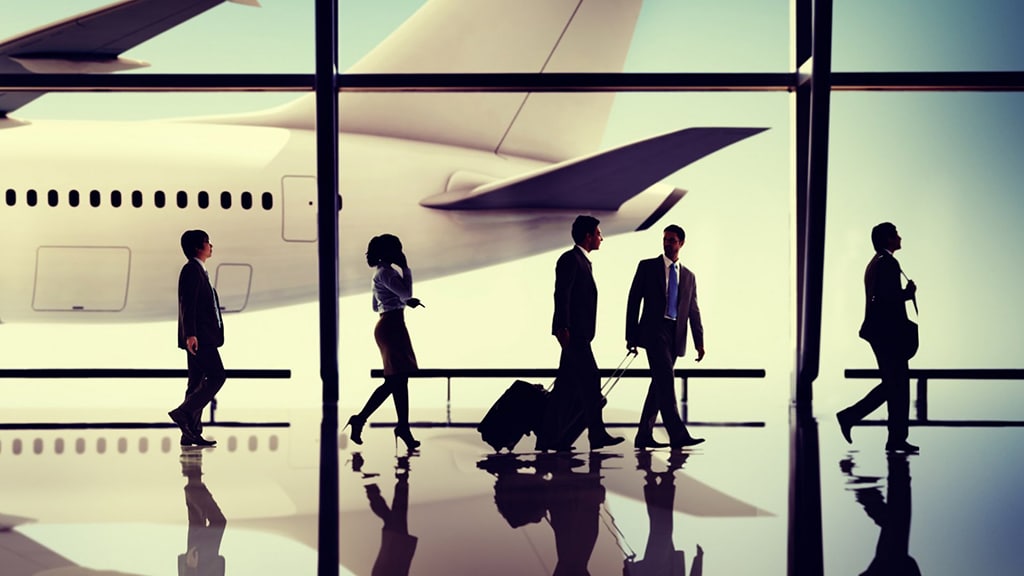DALLAS, US: The global business travel industry has rebounded at a more accelerated rate than expected just a year ago and is now expected to surpass its pre-pandemic spending level of $1.4 trillion in 2024 and grow to nearly $1.8 trillion by 2027. In 2022, global business travel spending rose 47 percent to $1.03 trillion, with strong gains continuing and 32 percent growth expected in 2023.
These robust gains were fueled by pent-up demand after the COVID-19 pandemic, more favorable global economic conditions in 2022 and 2023 and recession risks that have yet to happen. Unveiled at the 2023 GBTA Convention in Dallas, the GBTA Business Travel Outlook (BTI) is an annual exhaustive forecast of business travel spending and growth covering 72 countries and 44 industries. Now in its 15th edition, this latest report outlines the top-level outlook for forecasted global business travel spending and other trends for 2023 to 2027.
The latest 2023 GBTA Business Travel Index Outlook – Annual Global Report and Forecast is published by the Global Business Travel Association in collaboration with Visa. New in this year’s BTI are also data and analysis from GBTA’s comprehensive survey of 4,700 business travelers across five global regions, representing insights from employee travelers regarding their business travel preferences, behaviors and spending including what they report as their average price of a business trip now.
“The headwinds that were anticipated to impact the rebound of global business travel over the past year didn’t materialize and that is good news. This latest forecast now indicates an accelerated return to pre-pandemic spending levels sooner than anticipated as well as growth ahead in the coming years. Business travel spending is a key indicator, but how travel volumes will continue to rebound is yet to be seen, said Suzanne Neufang, CEO, GBTA. Global business travel spending is expected to recover to its pre-pandemic total of $1.4 trillion in 2024 and grow to nearly $1.8 trillion by 2027, fueled by more favorable economic conditions than expected in 2022 and 2023.
In 2022, global business travel spending rose 47 percent to $1.03 trillion. These strong gains have continued into 2023, with 32 percent growth in global expenditures expected this year. The estimated breakdown of the $1.03 trillion in business travel expenditures includes $183 billion in air spend, $395 billion in lodging spend, $191 billion in food and beverage spend, $138 billion in ground transportation spend and $121 billion in other travel expenses. “As travel continues to rebound, we expect digital payments to continue to grow because they make it easier and more secure to do things like purchase plane tickets for business travel or split a check at dinner.
Visa sits at the center of money movement facilitating commerce across geographies and streamlining payments made when traveling – whether for business or pleasure – domestically or across borders, said Gloria Colgan, SVP, Global Head of Products, Visa Commercial Solutions. Over the past 18 months, the most important factor driving the pace of global business travel’s recovery is the progress made fighting the COVID-19 pandemic. The two biggest drivers in the industry’s stabilization over the last six months have been the return of in-person meetings and events and the recovery of some international business travel capacity and volumes. Recovery in business travel continues to vary by region.
Western Europe was the fastest growing region globally in 2022. North America and Latin America saw spending growth accelerate significantly in 2022. Emerging Europe continues to lag in its recovery, challenged by the war in the Ukraine. Regionally, Asia Pacific was the big laggard last year given the delayed reopening of the Chinese economy. Chinese business travel spending fell 4.6 percent last year, dropping China down to the #2 business travel market in the world for the first time since 2014.
However, China is expected to recover back to being the #1 business travel market in the world by the end of 2023. Business travel spending recovery also continues to differ based on industry, with construction, education, and professional, scientific and technical activities showing the most resiliency. The resilience of the global economy was a key factor in the current rebound.
However, looking forward, numerous challenges remain, including the war in Ukraine, persistent inflation in certain areas, much tighter global financial conditions and deterioration in the manufacturing sector. While a promising rebound is expected, there are several factors that could influence the industry’s longer-term forecast. An increased focus on sustainability initiatives, widespread adoption of meeting technologies, growth in the remote workforce and the rise of blended travel are potential game changers in the future of business travel.











